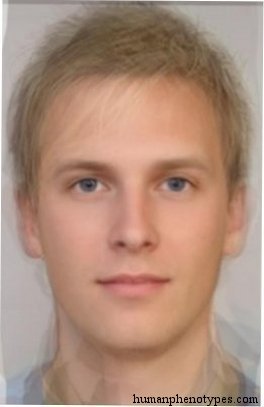Description
Nordid proper, resembles the Iron Age remains of the Austrian village of Hallstatt. Most common among Swedes and South Norwegians. Frequent in England, Northern Germany, Netherlands, Northern France, Iceland, Northern Poland, along Daugava, Vistula, and Po rivers, sometimes Austria, Switzerland, Northern Italy. Germanic tribes (Goths, Vandals) brought traces to Spain, Greece, North Africa, and Russia.
Physical Traits
Skin: Pinkish pale
Hair: Straight to wavy
Hair Color: Golden blonde, sometimes red or light brown
Eyes: (Grey-)blue
Height: Tall
Build: Ectomorph or mildly mesomorph
Shoulders: Wide
Hips: Narrow (even in women)
Legs: Meso-sometimes brachyskelic
Skull: Mesocephalic, sometimes dolichocephalic
Vault: Mildly chamaecranic
Occiput: Curved
Nose: Hyperleptorrhine, straight or mildly convex, high-bridged
Face: High and narrow with marked features
Forehead: Mildly sloping
Lips: Thin
Chin: Sturdy
The Hallstatt type exhibits pinkish pale skin with straight to wavy hair that is golden blonde, sometimes red or light brown, paired with grey-blue eyes. The build is tall and ranges from ectomorphic to mildly mesomorphic, characterized by wide shoulders and narrow hips (even in women), with meso- to sometimes brachyskelic leg proportions. The skull is mesocephalic, occasionally dolichocephalic, and mildly chamaecranic with a curved occiput. Facial features are high and narrow with marked characteristics, including a hyperleptorrhine nose that is straight or mildly convex and high-bridged. The forehead is mildly sloping, lips are thin, and the chin is sturdy, creating a distinctive Nordic appearance.
Literature References
The Hallstatt type has been described in anthropological literature as follows:
- Coon (1939) separated it from other Nordid varieties as Hallstatt or Østerdal
- Kunssmann (1996), Vondernach (2008), and Eickstedt (1952) named it Teuto Nordid
- Lundman (1988) called it Göta or Skando Nordid
- Deniker (1900) and Biasutti (1967) described it as the Nordic proper type








